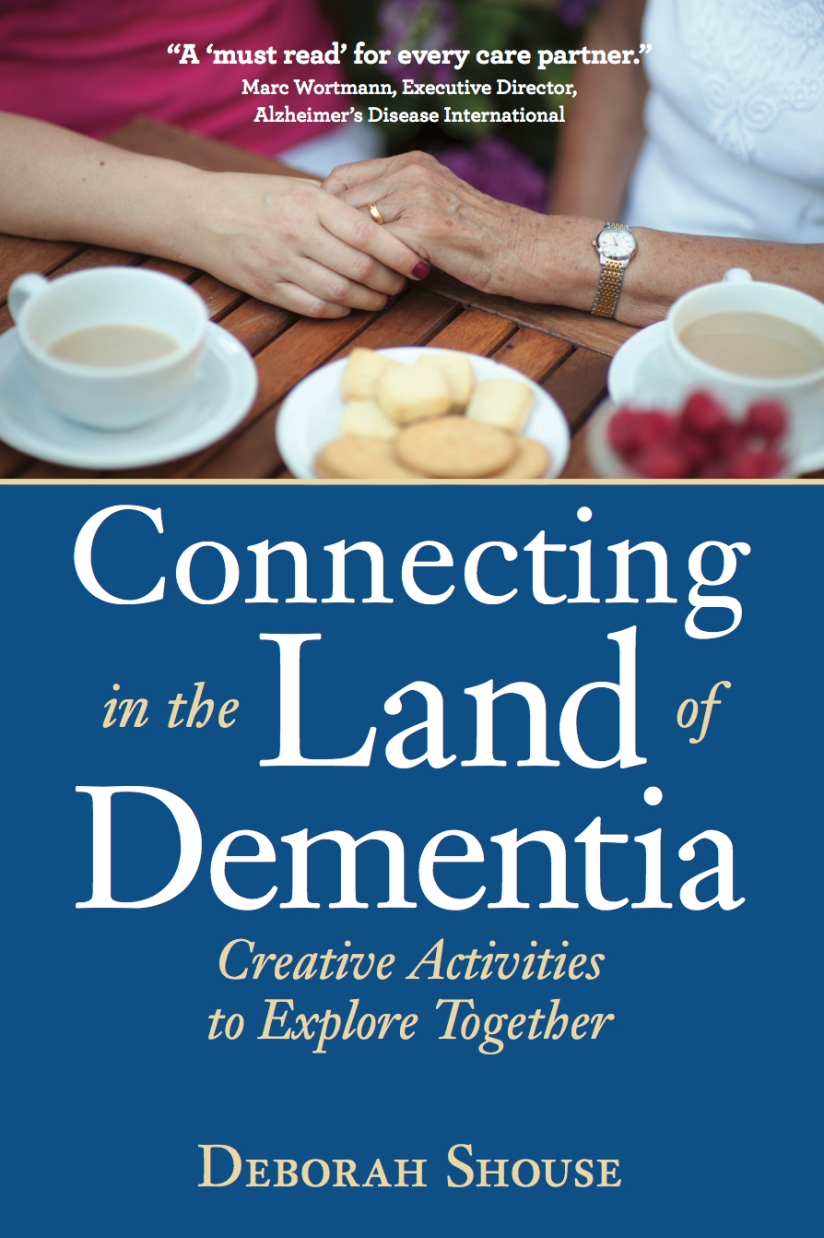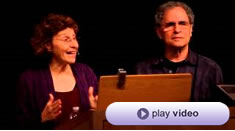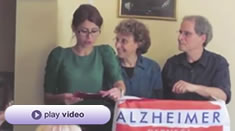“I’m having a slow day,” Laurie Scherrer says, when I call her Pennsylvania home for our scheduled conversation on adapting to dementia. “So bear with me.”
It was easy to bear with Laurie, as she is bright, positive, articulate, insightful, and authentic.
I met her during a telephone interview for the esteemed podcast, Alzheimer’s Speaks, which she co-hosted along with founder Lori La Bey. I was so impressed with both of the women’s insights and interviewing abilities, and I wanted to learn more about how Laurie managed her life with early onset dementia. Here are some highlights from our conversation.
From Sales Leader to Closet Cleaner
How do you go from excelling in a distinguished business career as a top manager and sales leader to becoming an unemployed 55-year-old woman who can no longer do a simple math problem or weed her prized garden?
That’s what happened when Laurie Scherrer was diagnosed with early onset dementia in 2013. After days of languishing at home, cleaning out closets, and feeling like a complete nobody, she realized she needed to take action. And being a woman filled with determination and creativity, she did just that, with her husband offering his unwavering support.
“I have a passion for excellence and the recognition that comes with it,” Laurie says. “Being Number One in sales drove me.”
Since she had nothing to push towards, she turned toward writing blogs and to her former passion for sewing, so she’d once again feel accomplished. Plus, Laurie wanted something tangible to give to her family members, something that said, “I love you.”
Forgetting the Curves and Going Straight
In her earlier days, before her career consumed much of her time, Laurie was an accomplished seamstress, reveling in creating costumes for church programs. She had loved sewing quilts and clothes and decided she’d return to her former hobby.
She sat down with yards of fabric, ready to cut quilting squares. But hard as she tried, she could not figure out how to cut the fabric. She was slumped over her sewing machine, weeping, when her neighbor dropped by.
“I can’t do this anymore,” Laurie said.
“I’ll help you,” her neighbor said.
She brought over a cutting board with lines in it and talked Laurie through the process of cutting the cloth.
“Once she helped me lay it out, I could do it again,” Laurie says. 
Laurie has since created blankets, pillowcases, burping cloths, and more for her family.
“The straight lines are working for me,” she says.
Noticing the Blessings
Laurie is making the most of her life. She treasures her glorious back yard and her deepened relationship with nature.
“Before, I was so busy, I never saw all the beauty around me,” she says.
She also treasures her worldwide friendships with people living with dementia, which she nourishes through video chatting and posting on Facebook. She and some chat friends recently started a virtual spiritual dementia café, where they read, discuss scripture and pray with and for people from all over the world.
Most of all she loves knowing she is giving back and helping others through her writing, speaking, radio hosting, and advocacy.
Teaming Up to Produce Great Results
Laurie and her husband work together to help her live a vibrant life. Here are their tips:
- Have a designated place and time to escape to, with no phones or email, so you can talk, cry, and really express yourself.
- Talk through the tough times. Notice when someone has a difficult day and figure out how you can improve things.
- Work together to adapt beloved activities.

- Laugh as much as possible.
- Be thankful for every good moment.
I know you’re going to want to know more about this remarkable woman and her tips for adapting to dementia. Visit https://dementiadaze.com/about-me/
Deborah Shouse is the author of Connecting in the Land of Dementia: Creative Activities to Explore Together and Love in the Land of Dementia: Finding Hope in the Caregiver’s Journey.

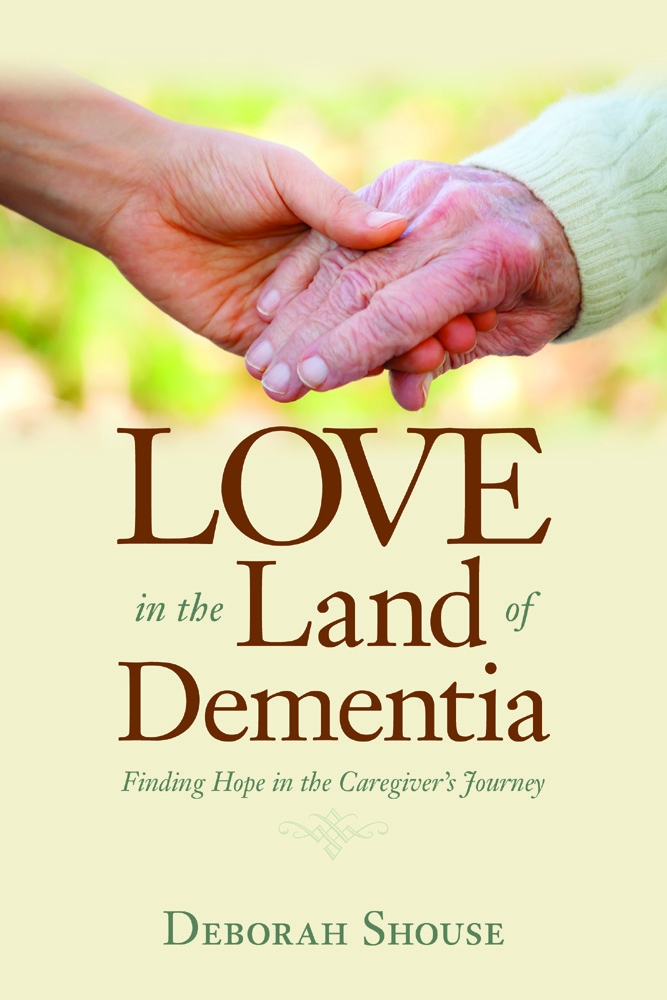

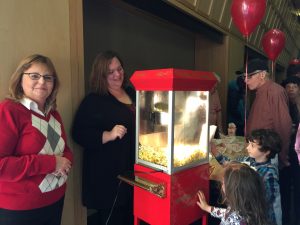 The Red Balloon was a wonderful success. This ageless film, about a boy and his magical balloon, attracted one hundred people, from ages three up through the nineties. Our audience, little kids and big kids both, clustered around the popcorn machine, watching the aromatic kernels blossom. They listened to Parisian songs by a renowned clarinetist and a guitarist. They learned a little about creating a “memory aware” city. And they laughed, smiled, sat on the edge of their seats, and clapped, all avidly involved in the movie. At the end, we walked out holding a huge bouquet of red balloons and each person was excited to take home a lovely reminder of the afternoon.
The Red Balloon was a wonderful success. This ageless film, about a boy and his magical balloon, attracted one hundred people, from ages three up through the nineties. Our audience, little kids and big kids both, clustered around the popcorn machine, watching the aromatic kernels blossom. They listened to Parisian songs by a renowned clarinetist and a guitarist. They learned a little about creating a “memory aware” city. And they laughed, smiled, sat on the edge of their seats, and clapped, all avidly involved in the movie. At the end, we walked out holding a huge bouquet of red balloons and each person was excited to take home a lovely reminder of the afternoon.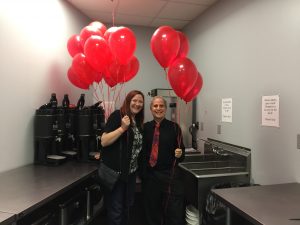

 Every person is inherently creative. Of course, I knew this. But it is so lovely to be reminded in so many ways. It is so lovely to be invited more deeply into your own creativity through song, dance, theater games, art, movement, and brainstorming. It’s inspiring to be in a room where so many are expressively at ease with their creative spirits.
Every person is inherently creative. Of course, I knew this. But it is so lovely to be reminded in so many ways. It is so lovely to be invited more deeply into your own creativity through song, dance, theater games, art, movement, and brainstorming. It’s inspiring to be in a room where so many are expressively at ease with their creative spirits.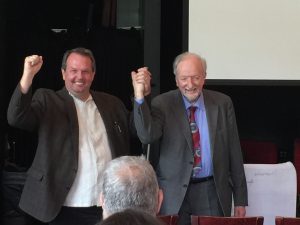
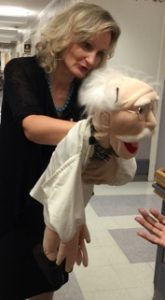 I’ve met a lot of doctors whom I admire, due to their intelligence, listening skills, willingness to collaborate, and their ability to have the occasional hearty laugh. Recently Veronica Kaninska, Certified Therapeutic Recreation Specialist, introduced me to a Doc I instantly fell in love with.
I’ve met a lot of doctors whom I admire, due to their intelligence, listening skills, willingness to collaborate, and their ability to have the occasional hearty laugh. Recently Veronica Kaninska, Certified Therapeutic Recreation Specialist, introduced me to a Doc I instantly fell in love with.





